

A long time ago in a galaxy far, far away there used to be a ball club known as the "Montreal Expos." Historians and archaeologists disagree on both the origins of the franchise and on the meaning of the word "Expos." Theories abound on each. Martin van Schnauserhoeffen, the preeminent archaeologist from USC, has postulated that the team was formed by a group of local nudists, which, he claims, explains the name. Alvin Steinmetz, on the other hand, has loudly referred to van Schnauserhoeffen as an idiot, pointing out that his analysis depends on the obviously incorrect assumption that Quebecois speak English; Steinmetz has instead suggested, relying on the French meaning of the term as a "lecture" or "account," that the franchise began as a club team for the Montreal Forensics Society.
The mysteries of the Expos' shadowy past and meaning of their nickname may never be solved, but the deteriorating circumstances surrounding their eventual demise have been well-documented. I must say I was slightly saddened as I watched the bottom of the ninth slip slowly away in the Phillies last-ever appearance (and victory!) in Montreal: this was after all the site of one of the most dramatic home runs in franchise history, a blast by Mike Schmidt that propelled the Phillies to their only World Championship, and the site of Tommy Greene's no-hitter in 1991. Then again, I was beaming with anticipation and realization... yes, I could be the trailblazer and be the first to have a memorial page dedicated to baseball's first Canadian franchise! So, here it is, the first page dedicated to the memory of baseball's Montreal Expos, a team which ended its stay in Montreal on Wednesday, September 29, 2004 (this page was created the day of the announcement of the move to Washington, September 28).
The first reported sightings of the Montreal Expos occured in 1969 around a site archaeologists have named "Jarry Park" (after the great archaeology play-by-play man, Harry Jarry). The site, which is now home to a tennis facility and is bounded by Rue Faillon and Rue Jarry in Montreal, is scheduled to be excavated to search for early evidence of primitive Expos, but the necessary permits have been hung up in committee for several years.
Sometime after the 1976 Olympics, a large tribe of tennis players threatened the Expos' territory. With insufficient numbers to mount a serious defense of Parc Jarry, the Expos club retreated southeastward, finally settling in the cold winter months at the site of the abandoned stadium the city of Montreal built for the 1976 Olympics. The Expos were able to establish themselves at this site, and, over time, Le Stade Olympique became known as their homeland.
The ruins of Le Stade Olympique are familiar to everyone,* but what is less common are photographic evidence of the Expos' actual stay in Montreal. This overview contains many such photographs, and, before I continue, I think it would be helpful to introduce some photos that will help the reader to get a mental picture of what Expos society looked like. With this in mind, here is a view from inside the massive structure:

And a view from outside, with its space-age styling:
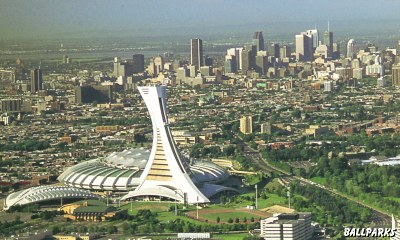
Le Stade Olympique was designed by an architect we know as Roger Taillibert. Details of Taillibert's life are sketchy. He was born in Chatres-sur-Cher, but the date is uncertain: he could have been born anywhere between 1926 and 1958, and was evidently French by birth. After the 1976 Olympics, Taillibert's massive structure had been abandoned, and the early Expos must have found its cavernous space provided some minimal protection from the harsh Canadian winters. Having settled here during that first winter, the early Expos remained and found the space amenable to establishing a thriving civilization. By 1979, the Expos, long the dormats of the National League, became a contender.
At this point, it seems appropos to mention one of the great unsolved mysteries of this lost baseball team: the meaning of its mysterious emblem which was inextricably tied to the franchise for as long as it lasted. The emblem can be viewed at the top of the page and in the pictures of the various Expos centurions seen on this website. Eminent baseball theologist Milo O'Flannerty has suggested that the logo is meant to represent the eternal nature of the club; he argues that the basic shape of the emblem features the same shape, not unlike a lower case "b," placed back-to-back with itself. O'Flannerty affectionately refers to the design as "The Janus of the North" in his book The Theological Roots of Modern Baseball Symbolism: Didacticism, Hegemony, and Paradigms in Sociological Constructions. This claim, however, is far from beyond dispute. Malik Ra Aheem has argued that the emblem is not truly symmetrical, which argues against O'Flannerty's claims; instead, Aheem has suggested the emblem is a symbolic and inverted representation of the interior female reproductive system, with the two lower bulbous protrusins meant to represent the ovaries. While certainly a creative hypothesis, many historians have argued that the knowledge of anatomy it would take to have created this emblem on that model escaped the early Expos, which would make it an impossible claim. Ultimately, no consensus exists: ideas range from the silhouette of some long-lost species of butterfly to a stylized version of Montreal's ancient (ca. 1969 C.E.) landscape itself.
Whatever the meaning of the emblem, it became the central element on what can only be described as the coxcomb the early Expos wore as part of their peculiar offical garb, worn at all official events by the club members from ca. 1969-1991. Les Expos, like most of the great ancient civilizations we are now able to learn much about, were fantastic record keepers. As such, we have a startlingly clear idea of what these ancient uniforms looked like; however, the reason for their design and their precise purpose still eludes us. What follows are some examples of the outfit of the Expos from the Jarrian and Pre-Alouian eras of 1969-1991:
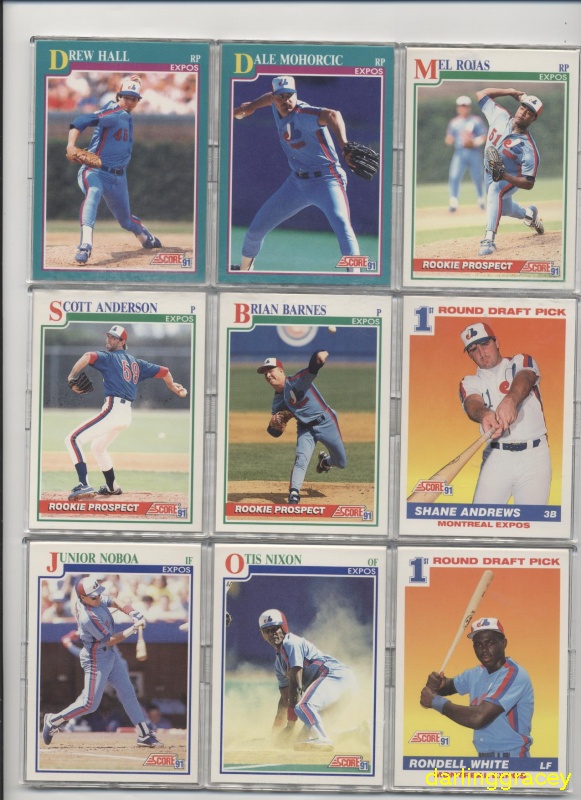
With all due respect to the ancient Expos, it must be said that one of the great mysteries for baseballologists is divining exactly what these were supposed to represent or accomplish. Red, white, and blue as colors do not relate to anything specifically Canadian or Montrealian. As you can see, the uniforms came in two varieties: whie and a sort of periwinkle blue. The periwinkle tone is particularly perplexing, because it so obviously clashes with the royal blue of the emblem, which is displayed prominently on the uniform itself and on the hat. The infantry garb is further complicated by the fact that the previously mentioned hat --- a pinwheel coxcomb, to be sure --- has a large portion that is royal blue, to match the emblem.
These strange costumes continue to be the cause of much debate among baseballologists: they have none of the grandeur and majesty of a traditional military uniform, which has caused some to speculate that they must have been for other purposes. But what? Guesses have ranged from civil service uniforms to janitorial outfits, but the safest guess remains a bizarre sort of military use, and one which distinguishes between only two ranks of soldier: officers and enlisted men (most have guessed that white would be for the officers and periwinkle for the enlisted men, based on the frequency with which each is seen).**
Like all great ancient societies, the early Expos also had an extensive mythology. At the center of this was a monstrous, blood-thirsty god known as Youppi!, who demanded a near constant stream of human sacrifice (usually selected from the seating areas within Le Stade Olympic, which helps to explain the thinning of the numbers of ExposNation from the height of their power in 1982 to the last days of their civilization in 2004). The ancient Expos believed that no one could directly view Youppi!, that looking upon his visage would cause instant annihilation. Therefore, it was a crime punishable by exile to produce any image of Youppi! --- in a famous case from which documents survive, a man named Bobby Ramos was caught producing just such an image ca. 1984, C.E., was banished, and after that vanished without a trace. However, in the Alouian and Post-Alouian era (peopled by the Modern Expos), superstition gave way to a sort of mocking infantilization of previous belief systems, and Youppi! was envisioned as a cross between that besneakered thing from Looney Toons and Oprah Winfrey:

This image, among other things, provides a nice bridge to discussing, in some detail, the four major eras of Expos history. The Jarrian Era, so named for Parc Jarry, home of the Expos in ancient times, lasts roughly from ca. 1969 C.E. - ca. 1976 C.E., and the people who were part of the Expos civilization during this time are known as Primitive Expos. Their economy was mainly based on a barter system, though some early forms of currency developed in the latter stages of this epoch (ca. 1974 C.E. - 1976 C.E.). The names of the next three eras are all inter-related: the Pre-Alouian, the Alouian, and the Post-Alouian. All these are named for the greatest King of the Expos, Felipe Alou.
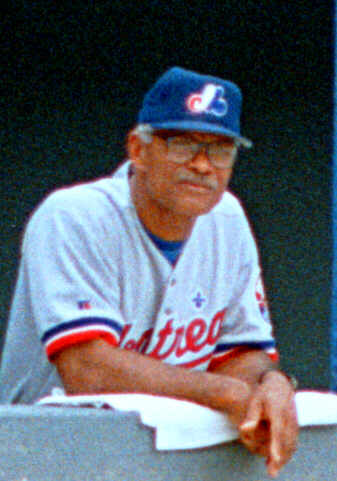
A near-mythic figure, Felipe Alou reigned for nearly a decade as the dictatorial leader of the Expos. His friends have tried to credit him with nearly every major advance in Expos civilization, while his enemies have tried to blame him alone for the decline of the Expos. No figure in Expos history is more polarizing, and no figure gives rise to more exaggeration. For example, Alou the Younger (son to Felipe), in a state-sanctioned "history" of the Expos, attempts to credit Felipe for the change in the Expos uniforms which happened in 1992 C.E. (these can be viewed both on Youppi! and Felipe Alou above and on all the photos of Expos appearing below this text). This, however, cannot be attributed to Felipe; the uniforms were changed before the 1992 season, when Tom Runnells was still in his brief tenure as ruler of the Expos. On the other hand, Felipe's enemies were just as open to re-writing the truth in order to debase the political leader. The revisionist historian, Martinez the Elder (exiled in 1993 C.E.), claimed in his History of the Expos Republic that Alou had murdered his predecessor, Tom Runnells, in order to gain the throne of the Expos. This claim is unsubstantiated, and almost certianly untrue; although Runnells disappears from the historical record when Alou assumes the throne, his managerial record suggests he was brain-dead long before Alou succeeded him. Alou did preside over two of the most successful campaigns in Expos history; in 1993 C.E., the Expos, after some struggles in the first half of the season, finished 94-68 and nearly caught a lightning-in-a-bottle Phillies team. The following year, in 1994 C.E., the Expos went 74-40 before the players' strike ended the season prematurely; at the end of play, the Expos held a six game lead on Atlanta for the division crown and, with the wild card ready to be introduced, were almost certainly a lock for a playoff spot.
This, then, is why the remaining three eras of Expos history are divided into the Pre-Alouian, the Alouian, and the Post-Alouian. Pre-Alouian Expos are known as Pre-Modern Expos, while Alouian and Post-Alouian Expos are known as Modern Expos. The Pre-Modern Expos enjoyed some of the most prosperous times in franchise history; it was during the Pre-Alouian period that the team made its first and only appearance in the post-season. Led by legendary figures like Gary Carter, Tim Raines, and Andre Dawson, the late 1970s to the early 1980s C.E. became one of unparalleled success; in 1979, the Expos won 95 games, most in team history, and in 1980 the team won 90 games, posting the only two back-to-back 90 win seasons ever for the Expos. Curiously, just as with the 1994 team, the other great Expos moment happened amidst a general players' strike in Major League Baseball in 1981 C.E., a fact which led one cynical baseballologist to observe that one could easily remember "when baseball's worst days were by simply recalling they are synonymous with the Expos' best" (O'Goldstein 254). In 1981, the Expos beat out the Phillies in a special strike-season playoff for the National League Eastern Division crown, which propelled them to an NLCS showdown with the Los Angeles Dodgers. The series went five games, and the Expos gave the Dodgers everything they could handle, but in the end the young team fell to the Dodgers, 3-2. The Expos would never get that close to the World Series again.
Although the rest of the Pre-Alouian Era was not nearly so glorious for the Expos, the team remained one of the National League's most consistently competitive franchises. From 1982 to 1991 C.E., the Expos had losing seasons only three times, and lost 90+ games only once (1991). In 1987, the Expos enjoyed their best season since 1982, winning 91 games but finishing only third in the division, behind the runaway Cardinals and the defending champion New York Mets.
After opening the 1991 season with a 20-29 mark (a .408 winning percentage), the Pre-Modern Expos deposed their king, Buck Rodgers, and elected their own king, Tom Runnells. Runnells, as it has been noted, was largely ineffective: he led them to a 51-61 mark after ascending the throne in June of 1991 (a slightly better .455 winning percentage), but led them to an uninspired 17-20 to begin the 1992 campaign. During this time, however, King Runnells did make one decision of lasting import: at long last, he changed the Expos uniforms! After more than two decades of wearing some of the most shockingly heinous uniforms in all of sports, the Expos donned their familiar ceremonial garb for the 1992 season. Curiously, however, this sweeping move, undoubtedly part of the overall rapid movement within Expos society towards modernization, did not include dropping the strange emblem, whose meaning, even by 1992, had already been long ago lost.

The results of King Runnells' aesthetic decision were staggering, although he was not around long enough to enjoy them. Inspired by their new combat attire, the Expos showed immediate improvement, rebounding from a dismal 71-90 campaign in 1991 to post a respectable 87-75 record. In 1993, the Alouian Expos were clearly baseball's next great civilization, nearly overthrowing a lightning-in-a-bottle Phillies team in the season's final days, and finishing 94-68 (their second best record for a full season as a franchise ever). Then came the abbreviated high water mark for baseball's most enigmatic kingdom: 1994.
King Alou had risen to unprecedented military power, having developed the strongest army in the history of the Expos civilization. Alou and his Expos dominated the baseball landscape from April through July of 1994, burning and pillaging anything that stood in their path. In one particularly famous incident, the Expos totally annihilated the city of San Diego, slaughtering its soldiers, its civilians in the stands, burning its schools, libraries, and churches to the ground, and salting the Earth where these architectural landmarks had stood. By August, their record stood at 74-40, and the Expos seemed poised to form an empire of all the baseball world.
However, while King Alou was claiming impressive, even awe-inspiring military victories, there were broader social forces that were challenging the very structure of baseball society which neither King Alou nor any ruler from that time period foresaw or, if they were dimly aware of the revolutionizing elements within their own societies, heeded. For all their victories, the common Expos soldiery, like the soldiers in all baseball societies, were fundamentally discontented. The rulers of baseball civilizations were becoming progressively more wealthy, while the common soldiery on which that prosperity depended continued to see only a very minor percentage of that wealth. At the same time, the pay for the common soldiery was increasing in the 1970s and 1980s: in 1967, the average baseball soldier's salary was 19,000 drachmas, but by 1979 it was over 113,000. The consequence of such a rapid increase in average pay was to ensure that while that generation of baseball soldiery remained undereducated, the succeeding generation of rank-and-file baseballers would benefit enough to receive more formal intellectual instruction. Additionally, with the invention of new methods of information disemination, such as ESPN, the ideas of revolutionary thinkers like Dave McNally and Andy Messersmith found new life and reached broader audiences than earlier intellectuals like Curt Flood could have dared even dream. These generally improving conditions allowed much of the common soldiery to be, on the one hand, better equipped to challenge the prevailing hierarchical structure, and on the other hand increasingly dissatisified with the rate at which they were "catching up" to the owners in terms of their real political and economic power. The result was a massive uprising: on August 11, 1994, baseball soldiers from several different civilizations staged simultaneous defections, turning their batting and pitching prowess against their rulers. The Expos, for their part, barracaded themselves into Stade Olympique, daring civic leaders to attempt to remove them.
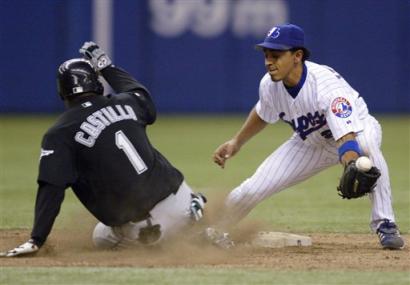
The years after the strike were sad ones indeed for the Expos. After rebounding from a losing campaign in the shortened 1995 season, the Expos rebounded to win 88 games in 1996, but once again the team could not afford to hold on to the talent that made this success possible. Though the Expos were still one of the top player-development organizations in baseball, the handwriting was on the wall: the Expos were not going to last in Montreal. The current owners could not afford it, and the negotiated labor deal was not going to encourage anyone to step in and attempt to save the franchise. Meanwhile, the loud, loyal fanbase was being eroded, disgusted by the greed displayed by players and owners willing to exploit average tapayers to get what they wanted, but totally unwilling to cooperate with one another to keep baseball viable in Montreal.
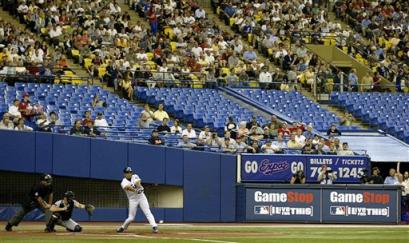
The Expos were purchased by a "savior," Jeffrey Loria, in 2000. Loria was billed as the person who would save baseball in Montreal; turns out, Loria saved himself, and totally plundered what was left of the Expos in the process. He sold the team to Major League baseball prior to the 2002 season, but before leaving, took everything, from the coaching staff to the scouting reports to the computers; the temporary staff was left to rebuild from scratch the Expos franchise. If there was any chance left to save the Expos, it was lost in this final degredation. Rarely has a city and a team been treated so badly by its supposed caretaker.
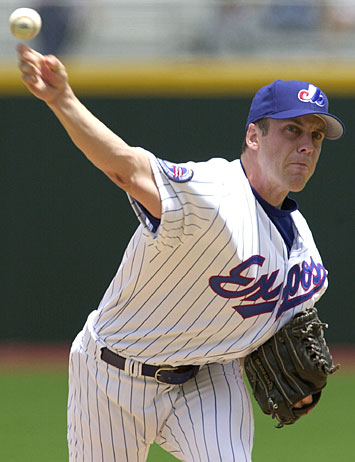
In the final years, the Expos were made to play a third of their home games in Puerto Rico at Hiram Bithorn Stadium, in effect auditioning San Juan as a possible market for Major League Baseball (it, by the way, turned out not to be nearly as good as Montreal, though that might have been because, as in Montreal, nearly nothing was done to promote the franchise). The added strain on the players took its toll on their performance on the field. A team that might have contended in 2003 finished 83-79; a team that was stripped of its final, and perhaps greatest all-time, star in 2004 struggled to win 70 games. Just before the end of the season, Major League Baseball finally announced it would be relocating the franchise to Washington for the 2005 season.

So that's the story of how greed and incompetence destroyed what otherwise might have been a supremely successful NL franchise. When the 1994 season ended prematurely, the Expos aggregate record stood at 2022-2074, and for all the world appeared to be on its way to north of .500 as the Expos put together a team that might dominate for a decade. Instead, the strike happened, the team never recovered, and the Expos ended their tenure with an aggregate record of 2753-2941. Hopefully, the franchise will buck the trend of the previous two Washington franchises and find better fortune and future for itself in the years to come.
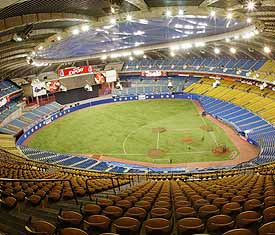
And now, in a moment of clever what-might-have-beenedness, here was a suggestion, originally made to me by my roomate Jeremy Rosenberg, on what the logo for the team in Montral should have been:
Then, someone, entering a contest on ESPN.com Page 2, took this idea all the way and developed this uniform concept for the Washington "Monuments:"
Now, this would have been the greatest uniform design ever conceived. It would collapse distinctions between past and future (with the clever M/W standing in for both the Expos and the Washington teams of old, while simultaneously invoking a whole new identity for a Washington franchise as the "Monuments"), rendering all one giant baseball continuum. This of course makes it far too cool ever to actually be used. Alas.
*-Or not.
**-It is worth noting that T. Algernon LeBlanc has suggested that the two outfits are meant to designate whether the "team" as he refers to Les Expos were playing at "home" or "away" --- whatever that means.